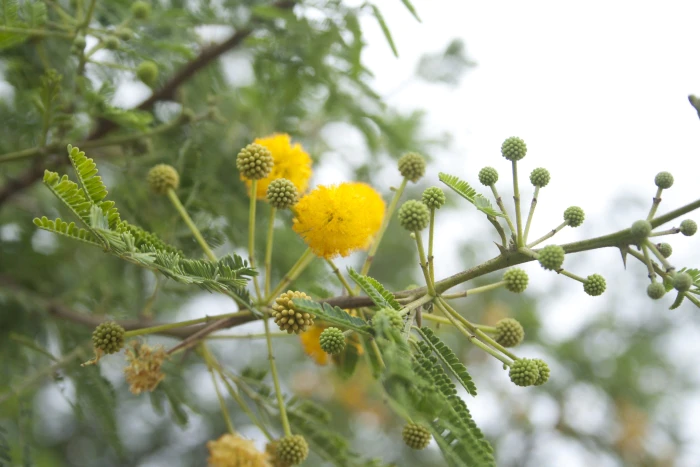Gum Arabic Tree
(Vachellia nilotica)
Gum Arabic Tree (Vachellia nilotica)
/
/

© Siddarth Machado
CC BY 4.0
Image By:
© Siddarth Machado
Recorded By:
Copyright:
CC BY 4.0
Copyright Notice:
Photo by: © Siddarth Machado | License Type: CC BY 4.0 | License URL: http://creativecommons.org/licenses/by/4.0/ | Uploader: siddarthmachado | Publisher: iNaturalist |



















Estimated Native Range
Climate Requirements for Logan City, Australia
| This Plant | Your Site | Plant Suitability for Your Location | ||
|---|---|---|---|---|
| • Precipitation | Unknown" - 129" | 49" | Aquatic | Aquatic |
| • High Temp. | 65°F - 111°F | 86°F | Your summer temperatures are normal for this plant. | Excellent |
| • Low Temp. | 3°F - 74°F | 47°F | Your winter temperatures are normal for this plant | Excellent |
This plant may not grow well at your location - your precipitation is too high.
Summary
Vachellia nilotica, commonly known as the gum arabic tree, is a deciduous to semi-evergreen tree native to savannas and sub-Saharan regions in Africa, the Arabian Peninsula, and the Indian subcontinent. It typically grows to a height of 16-66 feet (5-20 meters) with a dense, spreading crown. The bark is dark and deeply fissured, providing a distinctive texture. The bipinnate leaves are a bright green, adding to the tree’s lush appearance. Vachellia nilotica blooms with golden-yellow flowers arranged in spherical heads, which are followed by strongly constricted, coiled pods that contain the seeds. Flowering usually occurs during the rainy season in its native habitat.
The gum arabic tree is valued for its multiple uses, including the production of gum arabic, a substance used in food, cosmetics, and pharmaceuticals. It is also used for its wood, fodder, and traditional medicinal applications. In cultivation, it is often used for shade or as an ornamental tree due to its attractive foliage and flowers. Vachellia nilotica prefers full sun and can tolerate a range of soil types, though it thrives in well-drained soils. It is drought-resistant once established, making it suitable for arid climates. However, it can be invasive outside its native range, and its thorns can be problematic in garden settings.CC BY-SA 4.0
The gum arabic tree is valued for its multiple uses, including the production of gum arabic, a substance used in food, cosmetics, and pharmaceuticals. It is also used for its wood, fodder, and traditional medicinal applications. In cultivation, it is often used for shade or as an ornamental tree due to its attractive foliage and flowers. Vachellia nilotica prefers full sun and can tolerate a range of soil types, though it thrives in well-drained soils. It is drought-resistant once established, making it suitable for arid climates. However, it can be invasive outside its native range, and its thorns can be problematic in garden settings.CC BY-SA 4.0
Plant Description
- Plant Type: Shrub, Tree
- Height: 15-30 feet
- Width: 15-30 feet
- Growth Rate: Moderate
- Flower Color: Yellow
- Flowering Season: Spring, Summer
- Leaf Retention: Deciduous
Growth Requirements
- Sun: Full Sun
- Water: Low
- Drainage: Medium, Fast
Common Uses
Bee Garden, Drought Tolerant, Erosion Control
Natural Habitat
Native to savannas and sub-Saharan regions in Africa, the Arabian Peninsula, and the Indian subcontinent
Other Names
Common Names: Gum Arabic Tree, Egyptian Thorn, Indian Gum-Arabic-Tree, Babul, Babul Acacia, Black Babul, Mgunga, Prickly Acacia
Scientific Names: Vachellia nilotica, Acacia aegyptiaca, Acacia arabica, Acacia arabica var. arabica, Acacia arabica var. nilotica, Acacia bambolah, Acacia benthamiana, Acacia nilotica, Acacia nilotica
GBIF Accepted Name: Vachellia nilotica